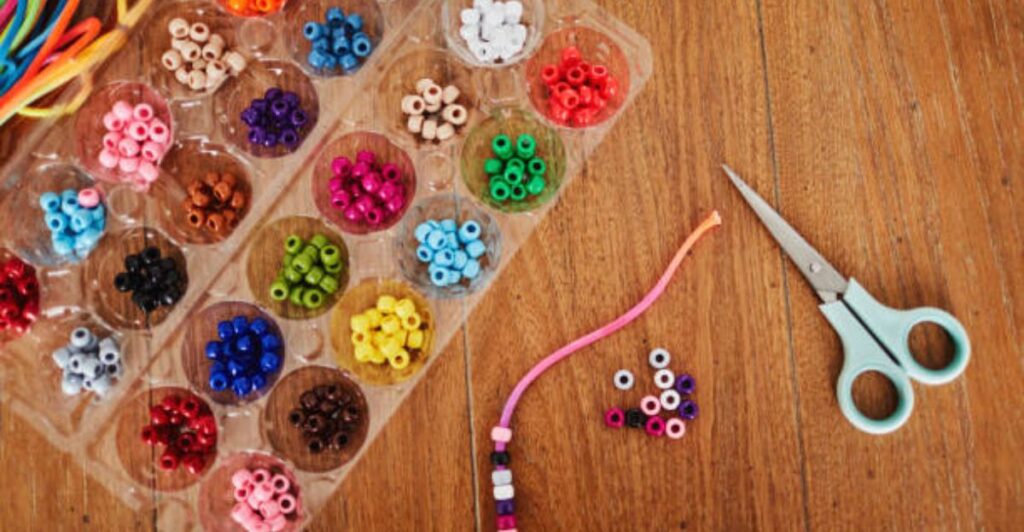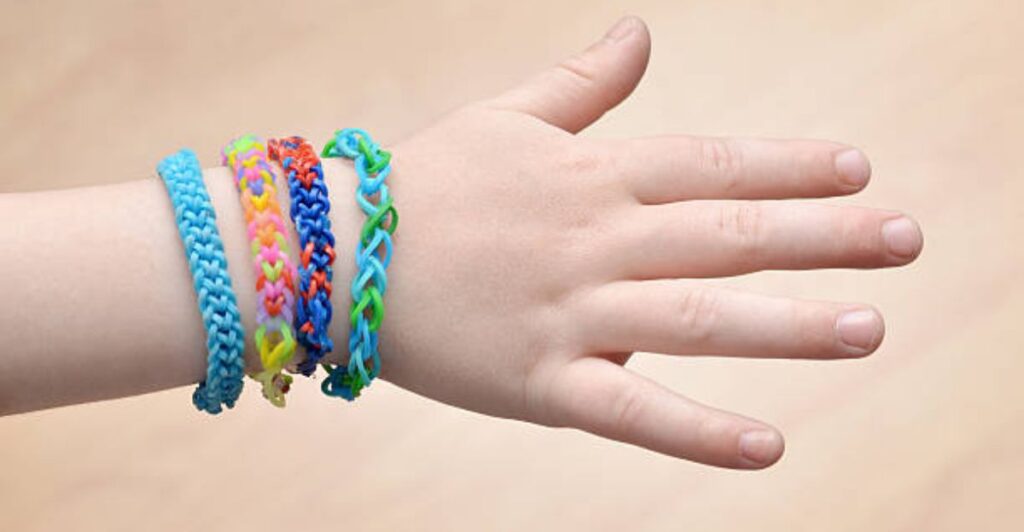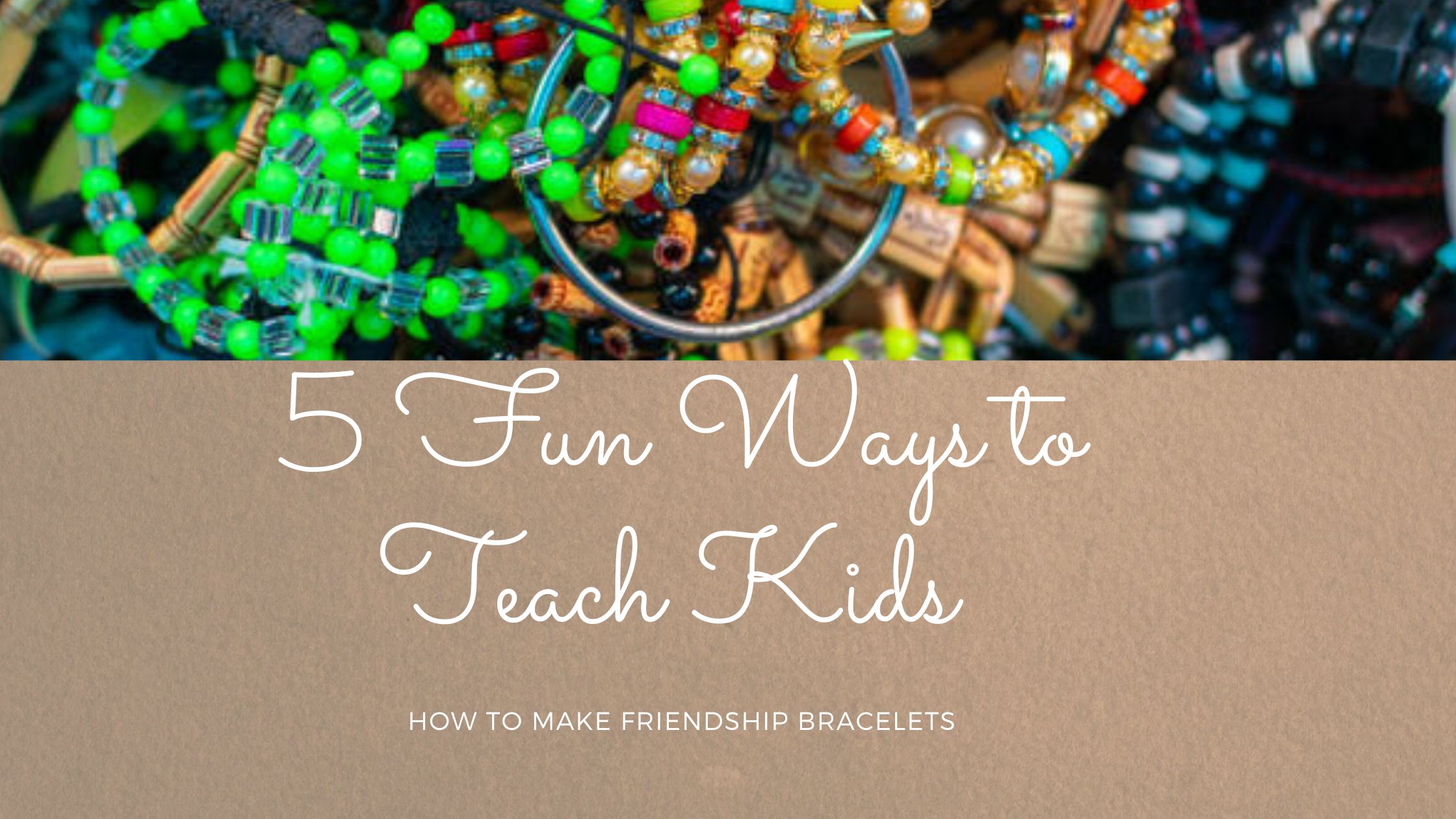🧵 Introduction: Why Friendship Bracelets Are Perfect for Kids
5 Fun Ways to Teach Kids How to Make Friendship Bracelets
Friendship bracelets are more than just colorful threads tied around little wrists—they’re a creative expression of kindness, patience, and personal style. Teaching kids how to make friendship bracelets helps develop fine motor skills, color coordination, and focus while encouraging social bonding. In today’s tech-heavy world, this hands-on activity offers a screen-free outlet that’s as educational as it is fun.
Whether you’re a parent, teacher, or caregiver, you can turn bracelet-making into a joyful learning experience. Let’s explore five fun and easy methods to teach kids how to make friendship bracelets they’ll be proud to wear or gift.
🎨 5 Fun Ways to Teach Kids How to Make Friendship Bracelets

1. The Classic Braided Bracelet
- Materials: Embroidery thread or yarn in 3+ colors.
- Age Level: 5+
- Instructions: Tie three strands together at the top and tape them to a table. Show kids how to braid like they would with hair. Knot the end and loop it around the wrist..
🧠 Tip: Start with thicker yarn for beginners to make it easier to manage.
2. Beaded Elastic Friendship Bracelets
- Materials: Elastic cord, plastic pony beads.
- Age Level: 4+
- Instructions: Let children thread colorful beads onto a stretchy cord. Help tie the knot securely and tuck it into a bead to hide it.
🎉 Tip: Encourage kids to spell out names or words with alphabet beads for personalized flair.
3. Finger-Knitting Bracelets
- Materials: Soft yarn.
- Age Level: 6+
- Instructions: Teach kids how to loop yarn around fingers in a pattern. This method creates a thick, rope-like bracelet and builds finger dexterity.
🎈 Tip: Use bright neon yarn for a trendy look kids will love.
4. Cardboard Wheel Bracelet (Kumihimo)
- Materials: Cardboard circle with 8 slots, embroidery thread.
- Age Level: 8+
- Instructions: Kids place threads into slots and follow a simple pattern by shifting the strands. This technique produces a beautiful spiral bracelet.
🌀 Tip: Color-code the strings to make following the pattern easier.
5. Nature-Inspired Braided Bracelets
- Materials: Twine, small flowers, leaves, natural fibers.
- Age Level: 5+
- Instructions: Encourage kids to collect soft, flexible natural items and weave them with twine into rustic friendship bracelets.
🌿 Tip: Perfect for outdoor crafting sessions and eco-learning.
📈 Trending Now: Friendship Bracelet Craze Among Kids (2025)
In 2025, the friendship bracelet trend has made a powerful comeback, fueled by nostalgia, creativity, and social media influence. These charming, handmade accessories are no longer just a summer camp staple—they’re now a full-blown crafting phenomenon among kids.

🌟 What’s Driving the Craze?
- 🌿 Eco-Friendly DIY Kits Are Hot Sellers
Parents and kids alike are embracing sustainable crafting with kits that feature biodegradable threads, natural dyes, and recyclable packaging. - 📱 Social Media Is Sparking Creativity
Platforms like YouTube Shorts, TikTok, and Instagram Reels are overflowing with easy tutorials, aesthetic design ideas, and challenge trends like the “30-Day Bracelet Swap.” - 🎤 Influencer & Celebrity Endorsement
Pop stars, teen idols, and kid influencers are often seen wearing colorful friendship bracelets—sometimes even giving them away during fan events or concerts. - 🏕️ Summer Camps & Schools Are On Board
From classroom bonding projects to DIY corners at summer camps, bracelet-making is being used to encourage teamwork, self-expression, and screen-free interaction.
Friendship bracelets have officially become more than just crafts—they’re a movement of meaningful connection and creative play.
💡 Suggestions for a Great Teaching Experience
Teaching kids how to make friendship bracelets can be both fun and enriching when approached thoughtfully. Here are some smart strategies to create a memorable and positive learning environment:

- 🎯 Keep It Short and Simple
Focus on one bracelet-making technique per session to keep kids engaged without overwhelming them—especially younger learners. - 📚 Use Storytelling
Weave in short stories about friendship, kindness, or the origin of bracelets as they craft. This keeps kids attentive and adds emotional meaning to their creations. - 📸 Celebrate Each Creation
Acknowledge every child’s effort with a photo, compliment, or a mini “bracelet fashion show.” This boosts their confidence and pride in their work. - 🧠 Incorporate Learning Moments
Use bracelet-making time to sneak in educational bits—talk about color mixing, counting knots, or even global bracelet traditions. - 👫 Make It Social and Interactive
Encourage a group environment through bracelet exchanges, team challenges, or collaborative designs. Crafting with friends fosters connection and builds social skills.
These small touches can transform a simple bracelet-making session into a meaningful creative experience filled with joy, learning, and lasting memories.
✅ Conclusion: Crafting Bonds That Last
Teaching kids how to make friendship bracelets is a joyful, hands-on activity that nurtures both creativity and connection. With just a few basic materials and a sprinkle of imagination, children can create wearable tokens of friendship while developing valuable life skills. From classic braids to trendy nature-inspired designs, these five methods offer something for every young crafter.
Whether it’s during a playdate, classroom craft time, or a lazy Sunday afternoon, friendship bracelet-making will always be a fun and meaningful tradition to share.
📚 References
- American Academy of Pediatrics. “Benefits of Crafting for Child Development.”
- Parents.com. “Fun and Easy Friendship Bracelet Projects for Kids.”
- HandmadeCharlotte.com. “Craft Ideas for Kids That Promote Creativity and Social Skills.”
- DIY.org. “Learn to Make Bracelets: Safe and Simple Projects for Children.”
- Etsy Trends Report 2025.
❓ FAQs
Q1. What age can kids start making friendship bracelets?
A: Kids as young as 4 can start with simple beaded or braided bracelets using elastic or yarn.
Q2. Are there any safety concerns to watch for?
A: Always supervise use of scissors and avoid small beads with toddlers to prevent choking hazards.
Q3. What if my child struggles with fine motor skills?
A: Begin with large beads and thick yarn. Finger-knitting and elastic bracelets are great starters.
Q4. Can bracelet-making be part of homeschool or classroom learning?
A: Absolutely! It can teach color theory, patterns, measurement, patience, and even history.
Q5. How long does it take to make a friendship bracelet?
A: It depends on the method. Simple beaded bracelets can take 10–15 minutes, while more complex ones might take up to an hour.

